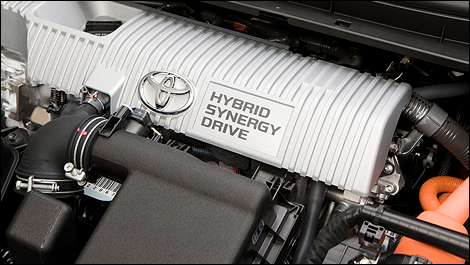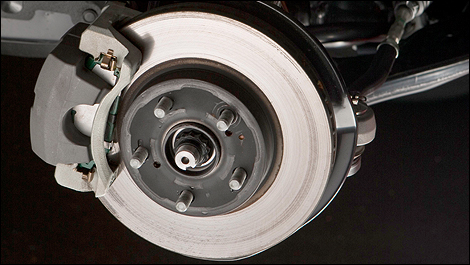To understand the success of Toyota's Hybrid Synergy Drive, you need to understand the company and the terminology the company uses.
Hybrid for example is defined as the combination of two or more different things, aimed at achieving a particular objective. In this case it is two distinct methods of propulsion for an automobile aimed at reducing
fuel consumption without reducing practicality. Another important definition is integration, which in this case is "data from one device or software to be read or manipulated by another, resulting in ease of use". The last major definition is Synergy which in its simplest terms means the whole is greater than the sum of the parts.
 |
| The new engine remains an Atkinson cycle engine rather than an Otto cycle engine. |
Engine
Major mechanical improvements start with an increase in engine displacement from 1.5 l. to 1.8 l. This change may seem contrary to the idea of saving fuel, but any increase in fuel consumption due to displacement is more than offset by having more torque on hand and being able to run roughly 300 rpm slower at an equivalent speed in top gear than the previous engine. The new engine remains an
Atkinson cycle engine rather than an Otto cycle engine. Atkinson cycle engines are about 10% more efficient than Otto cycle engines.
Further improvements have been made by the removal of all accessory drive belts from the engine. Power steering is electric as is the water pump, freeing up horsepower for propulsion.
Improvements to drivability, particularly cold weather driving comes about by the introduction of an exhaust heat recovery system. This system allows for faster engine warm up which leads to being able to "go electric" sooner. On the flip side of gaining heat, unwanted heat is handled in a new EGR (Exhaust Gas Recirculation) "cooler" that improves the volumetric efficiency of the engine.
MotorOn the electrical motor/generator components referred has MG 1 and MG 2, both are smaller, lighter (by about 33%) and more efficient. MG 1 (the Generator) now has centralized winding of the coils and MG 2 (the motor) can now handle higher rotational speeds which improve power and performance.
TransmissionThe transmission is a CVT unit to take advantage of a compact, light weight design by combining a Reduction Planetary Gear Ring, Power Distribution Planetary Gear Ring, a counter Drive Gear and a Parking Gear and it improves acceleration by better torque multiplication. In addition, the electric motor drives through the transmission which allows the vehicle to run on electricity alone rather than just having an electric "assist" motor".
BrakingRegenerative braking, part of every hybrid package, has seen an 18% reduction in weight and a 31% reduction in size. Changes to the recovery system reduce power consumption by 18-29% thus adding to efficiency and improved energy recovery.
 |
| Regenerative braking, part of every hybrid package, has seen an 18% reduction in weight . |

